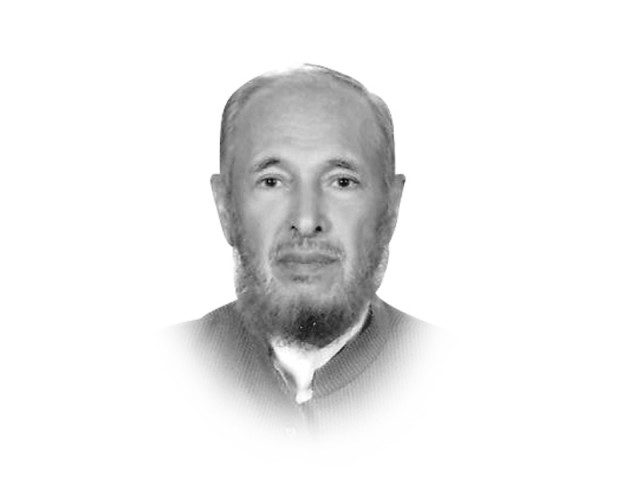India, Pakistan & the Nobel Peace Prize
Malala, Satyarthi cann't put their fame, potential to better use than to commit to a campaign for long-lasting peace

India, Pakistan & the Nobel Peace Prize
It must be conceded that winning a Nobel Prize only reflects an individual’s personal or institutional contribution to a cause or a branch of human knowledge and has little to do with collective thinking or formulation of policy. From that perspective, we can conclude that there would be no palpable change in the attitudes or mindsets of the critical stakeholders, who pronounce on issues of war and peace in both countries.
But then, people of India and Pakistan share many common genetic characteristics. One of these is the intense admiration for symbols, even in times of crises: two leaders jointly watching a cricket Test match between their two countries has huge symbolism for the emotionally charged crowds on both sides; or the film legend of India, Dilip Kumar, visiting Pakistan; or that greatest legend of all, the singer Lata Mangeshkar, captivating audiences in both India and Pakistan.
One of the great tragedies of contemporary times is the failure of statesmen on both sides of the India-Pakistan divide to foster the innumerable common objectives, traditions, as well as ethnic, historic, cultural, social and political linkages that have woven the two nations together for more than two millennia of recorded history.
The Cabinet Mission plan of 1946 — offered by the British and accepted by both the Muslim League and the Congress — was the last chance to preserve the unity of India. From that point onwards, divergences widened, the gulf deepened and the two countries have lived in perpetual hostility since independence.
Imagine the cost of confrontation when scarce resources are invested, not on socio-economic emancipation of the vast multitudes of impoverished people on both sides, but on an arms build-up that has no limits. It is no wonder then that India has emerged as the biggest importer of weapons in the world although 40 per cent of the people there live below the poverty line. Despite being the tenth largest economy in the world, its GDP per capita is only $1,300. The adult literacy rate is 68.3 per cent and its share of world market capitalisation is 2.88 per cent. India has 60 million chronically malnourished children, i.e., 40 per cent of the world’s total number of malnourished children. In 2015, it is estimated that there would be 143 million poor households in India. About one-third of the population is not connected to the national grid.
Coming to Pakistan, it is ranked 145 on the human development index out of a total of 187 countries. Around 53.4 per cent of the population is witnessing intense deprivation. Nearly half the population is deprived of basic necessities of life, like education and healthcare. About 27.4 per cent of the people live in severe poverty and 11 per cent are at risk of facing multi-dimensional poverty. And yet, the total defence and security related expenditure is more than Rs700 billion. In addition, seven million children don’t go to school.
These are grim statistics for nearly one-fifth of humanity. The policy of confrontation so steadfastly and vigorously pursued for the last 67 years by both countries has created not only agonising poverty, but also an ambience of hatred and antagonism that has destabilised South Asia and has given rise to extremism and militancy, which saps the vitality of 1.4 billion people of the two countries, besides creating fear and alarm in the larger region.
It is inconceivable what tremendous contribution the two countries could have made to progress, prosperity and stability of not only Asia, but also the entire world had they forged close, fraternal ties and availed themselves of the enormous opportunities that exist for promoting peace and progress. For two countries as big as India and Pakistan, and sharing such a long border and history, the volume of bilateral trade is just about $2 billion. Is that not something to reflect on?
Now there may be a glimmer of hope. Malala Yousufzai and Kailash Satyarthi, riding a wave of spontaneous acclaim and popularity, can leverage their unparalleled support in all sections of the population, both in South Asia and the world generally, by launching a peace movement — peace at all costs. Such a movement could generate an unstoppable momentum amongst the teeming millions of both India and Pakistan for rapidly building a peace lobby, rooted in the masses and representing all shades of people — traders, journalists, politicians, retired military and civil officers, farmers, workers, NGOs, artists, students, academics — who would relentlessly pursue an agenda of peace based on justice and the closest fraternal ties, which could transform the two countries in the years to come. Sounds utopian? Maybe. But all long journeys start modestly.
There is a deep yearning for peace among the peoples of both countries. The two Nobel laureates could not put their fame and potential to better use than to commit themselves to a historic campaign for long-lasting peace. The new momentum for peace could generate an environment for resolving issues like Kashmir and water in a more amicable manner. If Malala and Satyarthi could achieve even modest success in their endeavours for bringing peace to the subcontinent, they would have earned themselves a place in the hearts of millions of people in India and Pakistan — a reward of more value than the prizes they have just earned.
Published in The Express Tribune, October 26th, 2014.
Like Opinion & Editorial on Facebook, follow @ETOpEd on Twitter to receive all updates on all our daily pieces.













COMMENTS
Comments are moderated and generally will be posted if they are on-topic and not abusive.
For more information, please see our Comments FAQ